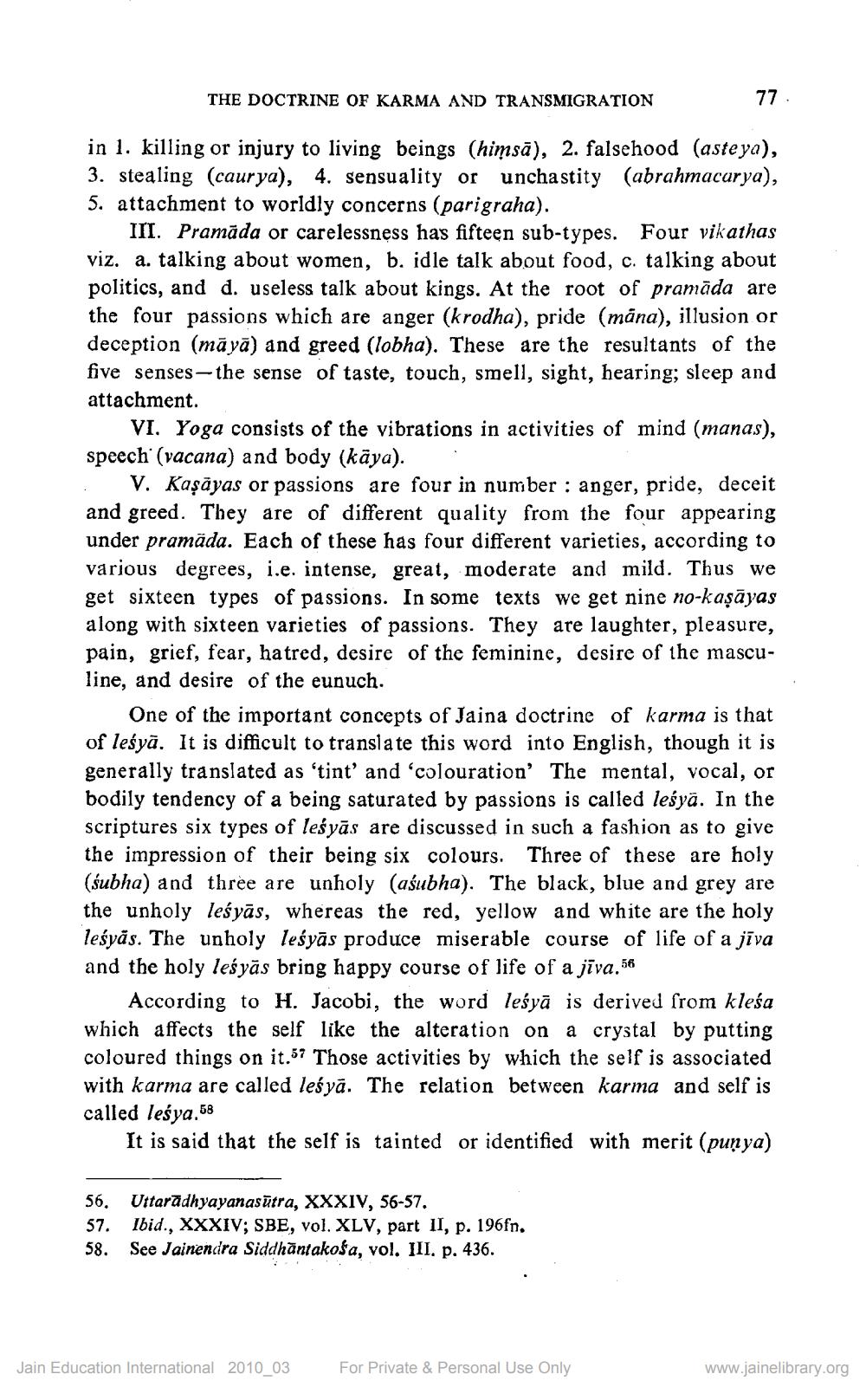________________
THE DOCTRINE OF KARMA AND TRANSMIGRATION
77
in 1. killing or injury to living beings (himsā), 2. falsehood (asteya), 3. stealing (caurya), 4. sensuality or unchastity (abrahmacurya), 5. attachment to worldly concerns (parigraha).
III. Pramāda or carelessness has fifteen sub-types. Four vikathas viz. a. talking about women, b. idle talk about food, c. talking about politics, and d. useless talk about kings. At the root of pramāda are the four passions which are anger (krodha), pride (mana), illusion or deception (māyā) and greed (lobha). These are the resultants of the five senses- the sense of taste, touch, smell, sight, hearing; sleep and attachment.
VI. Yoga consists of the vibrations in activities of mind (manas), speech (vacana) and body (kāya). .
V. Kaşāyas or passions are four in number : anger, pride, deceit and greed. They are of different quality from the four appearing under pramäda. Each of these has four different varieties, according to various degrees, i.e. intense, great, moderate and mild. Thus we get sixteen types of passions. In some texts we get nine no-kaşāyas along with sixteen varieties of passions. They are laughter, pleasure, pain, grief, fear, hatred, desire of the feminine, desire of the masculine, and desire of the eunuch.
One of the important concepts of Jaina doctrine of karma is that of leśyā. It is difficult to transiate this word into English, though it is generally translated as 'tint' and 'colouration' The mental, vocal, or bodily tendency of a being saturated by passions is called leśyā. In the scriptures six types of leśyās are discussed in such a fashion as to give the impression of their being six colours. Three of these are holy (śubha) and three are unholy (aśubha). The black, blue and grey are the unholy leśyās, whereas the red, yellow and white are the holy leśyās. The unholy leśyās produce miserable course of life of a jīva and the holy leśyās bring happy course of life of a jīva. 56
According to H. Jacobi, the word leśyā is derived from klesa which affects the self like the alteration on a crystal by putting coloured things on it.57 Those activities by which the self is associated with karma are called leśyā. The relation between karma and self is called leśya,58
It is said that the self is tainted or identified with merit (punya)
56. Uttaradhyayanasūtra, XXXIV, 56-57. 57. Ibid., XXXIV; SBE, vol. XLV, part II, p. 196fn. 58. See Jainendra Siddhāntakośa, vol. III. p. 436.
Jain Education International 2010_03
For Private & Personal Use Only
www.jainelibrary.org




